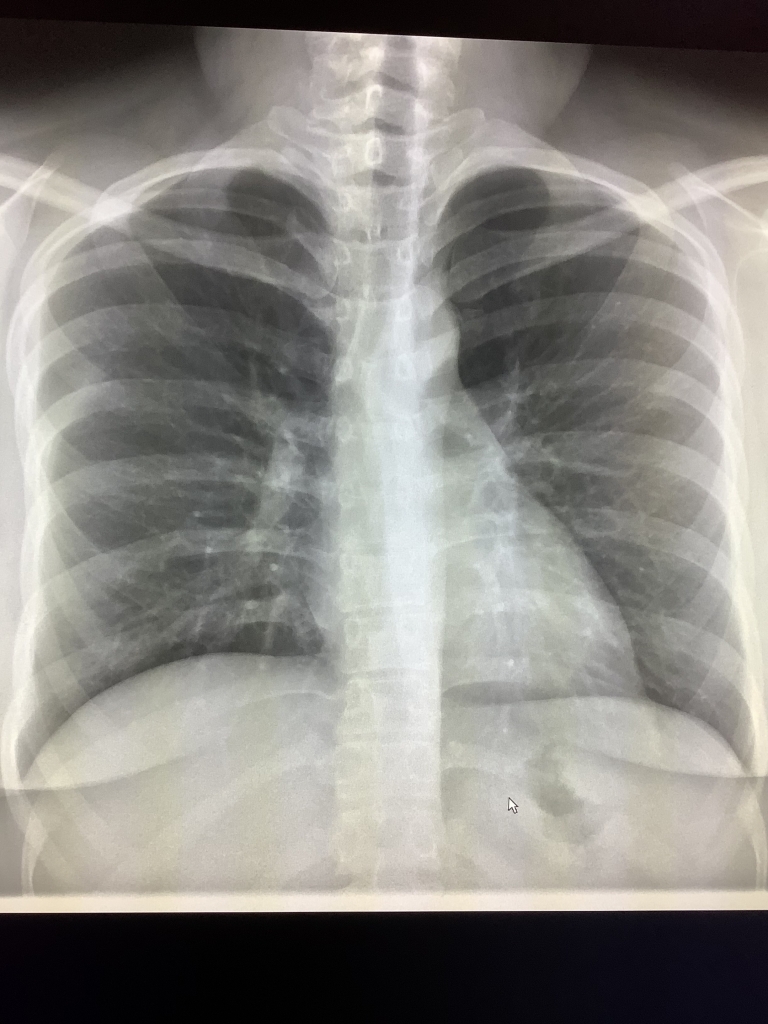Congestive Heart Failure on Chest X-ray
Signs of congestive heart failure on chest X-ray are most commonly from failure of the left ventricle. The left ventricle pumps blood out to the body through the aorta and its branches. When the left ventricle is not functioning like it should, there is back pressure on the veins of the lungs and eventually leakage of fluid into the lungs.
You can have congestive heart failure with little to no abnormalities on a chest X-ray. When we do see abnormalities, the earliest stage is called redistribution. This is when the back up from the left ventricle not working causes the veins in the lung to look bigger then they should, particularly in the upper lungs. The heart may also look bigger then usual.
The next phase of congestive heart failure is when fluid starts to leak around the airspace’s of the lung or into the interstitium. On chest X-ray, we will see small little lines along the periphery of the lung called Kerley-B lines. We can also see fluid leak around the bronchi, or tubes which carry air to the lungs. This will result in thickening of the walls of the bronchi. The central blood vessels may also enlarge causing the mediastinum or central chest to look wider.
When congestive heart failure worsens, the leakage of fluid goes into the alveoli or airspace’s of the lung and eventually into the pleural space, or covering of the lung. This will cause pleural effusions. The filling of the airspace’s, also called consolidation will often be gravity dependent unlike infections and other causes of lung disease.
When the findings are not typical or don’t match the clinical presentation, a chest CT can be obtained which will allow a better look at the lungs and other structures in the chest. Many of the findings of congestive heart failure on chest X-ray can be seen with other diseases so it is vital that your clinical doctor correlate the imaging findings with your clinical presentation and make sure it is due to congestive heart failure.

